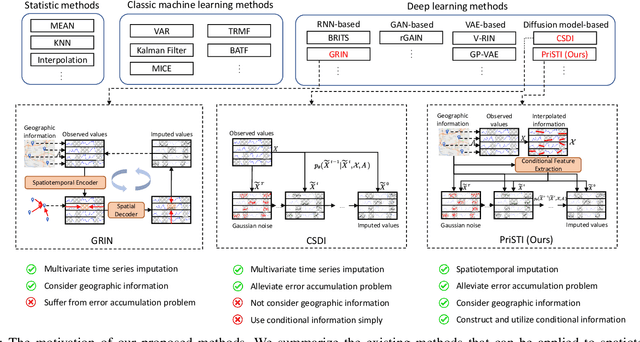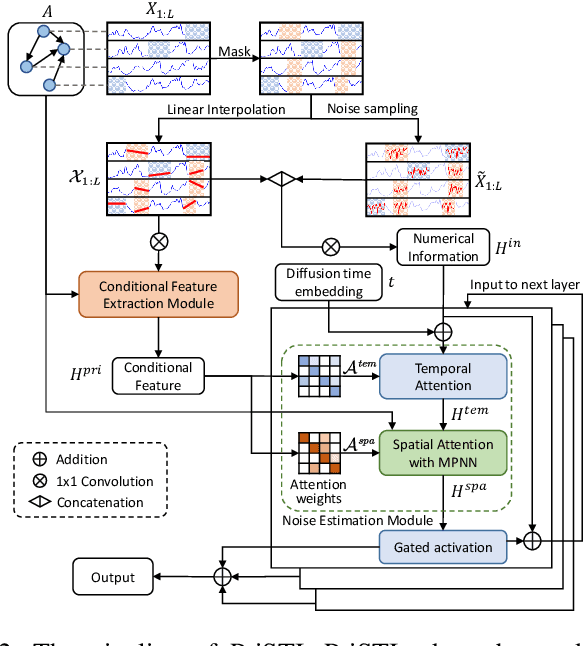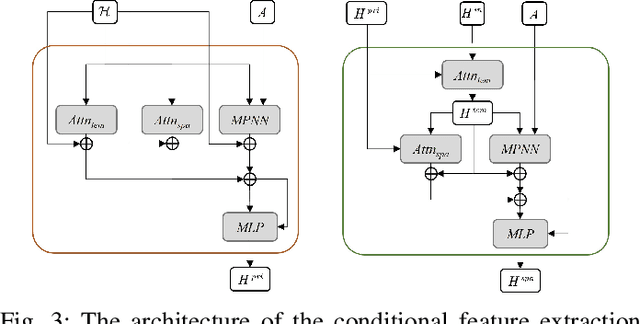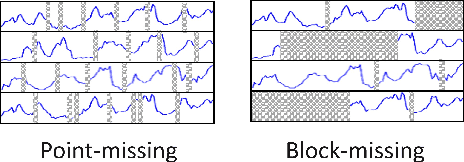Mingzhe Liu
Random-coupled Neural Network
Mar 26, 2024Abstract:Improving the efficiency of current neural networks and modeling them in biological neural systems have become popular research directions in recent years. Pulse-coupled neural network (PCNN) is a well applicated model for imitating the computation characteristics of the human brain in computer vision and neural network fields. However, differences between the PCNN and biological neural systems remain: limited neural connection, high computational cost, and lack of stochastic property. In this study, random-coupled neural network (RCNN) is proposed. It overcomes these difficulties in PCNN's neuromorphic computing via a random inactivation process. This process randomly closes some neural connections in the RCNN model, realized by the random inactivation weight matrix of link input. This releases the computational burden of PCNN, making it affordable to achieve vast neural connections. Furthermore, the image and video processing mechanisms of RCNN are researched. It encodes constant stimuli as periodic spike trains and periodic stimuli as chaotic spike trains, the same as biological neural information encoding characteristics. Finally, the RCNN is applicated to image segmentation, fusion, and pulse shape discrimination subtasks. It is demonstrated to be robust, efficient, and highly anti-noised, with outstanding performance in all applications mentioned above.
PriSTI: A Conditional Diffusion Framework for Spatiotemporal Imputation
Feb 20, 2023



Abstract:Spatiotemporal data mining plays an important role in air quality monitoring, crowd flow modeling, and climate forecasting. However, the originally collected spatiotemporal data in real-world scenarios is usually incomplete due to sensor failures or transmission loss. Spatiotemporal imputation aims to fill the missing values according to the observed values and the underlying spatiotemporal dependence of them. The previous dominant models impute missing values autoregressively and suffer from the problem of error accumulation. As emerging powerful generative models, the diffusion probabilistic models can be adopted to impute missing values conditioned by observations and avoid inferring missing values from inaccurate historical imputation. However, the construction and utilization of conditional information are inevitable challenges when applying diffusion models to spatiotemporal imputation. To address above issues, we propose a conditional diffusion framework for spatiotemporal imputation with enhanced prior modeling, named PriSTI. Our proposed framework provides a conditional feature extraction module first to extract the coarse yet effective spatiotemporal dependencies from conditional information as the global context prior. Then, a noise estimation module transforms random noise to realistic values, with the spatiotemporal attention weights calculated by the conditional feature, as well as the consideration of geographic relationships. PriSTI outperforms existing imputation methods in various missing patterns of different real-world spatiotemporal data, and effectively handles scenarios such as high missing rates and sensor failure. The implementation code is available at https://github.com/LMZZML/PriSTI.
Label Mask AutoEncoder(L-MAE): A Pure Transformer Method to Augment Semantic Segmentation Datasets
Nov 21, 2022Abstract:Semantic segmentation models based on the conventional neural network can achieve remarkable performance in such tasks, while the dataset is crucial to the training model process. Significant progress in expanding datasets has been made in semi-supervised semantic segmentation recently. However, completing the pixel-level information remains challenging due to possible missing in a label. Inspired by Mask AutoEncoder, we present a simple yet effective Pixel-Level completion method, Label Mask AutoEncoder(L-MAE), that fully uses the existing information in the label to predict results. The proposed model adopts the fusion strategy that stacks the label and the corresponding image, namely Fuse Map. Moreover, since some of the image information is lost when masking the Fuse Map, direct reconstruction may lead to poor performance. Our proposed Image Patch Supplement algorithm can supplement the missing information, as the experiment shows, an average of 4.1% mIoU can be improved. The Pascal VOC2012 dataset (224 crop size, 20 classes) and the Cityscape dataset (448 crop size, 19 classes) are used in the comparative experiments. With the Mask Ratio setting to 50%, in terms of the prediction region, the proposed model achieves 91.0% and 86.4% of mIoU on Pascal VOC 2012 and Cityscape, respectively, outperforming other current supervised semantic segmentation models. Our code and models are available at https://github.com/jjrccop/Label-Mask-Auto-Encoder.
Lifelong Property Price Prediction: A Case Study for the Toronto Real Estate Market
Aug 12, 2020



Abstract:We present Luce, the first life-long predictive model for automated property valuation. Luce addresses two critical issues of property valuation: the lack of recent sold prices and the sparsity of house data. It is designed to operate on a limited volume of recent house transaction data. As a departure from prior work, Luce organizes the house data in a heterogeneous information network (HIN) where graph nodes are house entities and attributes that are important for house price valuation. We employ a Graph Convolutional Network (GCN) to extract the spatial information from the HIN for house-related data like geographical locations, and then use a Long Short Term Memory (LSTM) network to model the temporal dependencies for house transaction data over time. Unlike prior work, Luce can make effective use of the limited house transactions data in the past few months to update valuation information for all house entities within the HIN. By providing a complete and up-to-date house valuation dataset, Luce thus massively simplifies the downstream valuation task for the targeting properties. We demonstrate the benefit of Luce by applying it to large, real-life datasets obtained from the Toronto real estate market. Extensive experimental results show that Luce not only significantly outperforms prior property valuation methods but also often reaches and sometimes exceeds the valuation accuracy given by independent experts when using the actual realization price as the ground truth.
 Add to Chrome
Add to Chrome Add to Firefox
Add to Firefox Add to Edge
Add to Edge